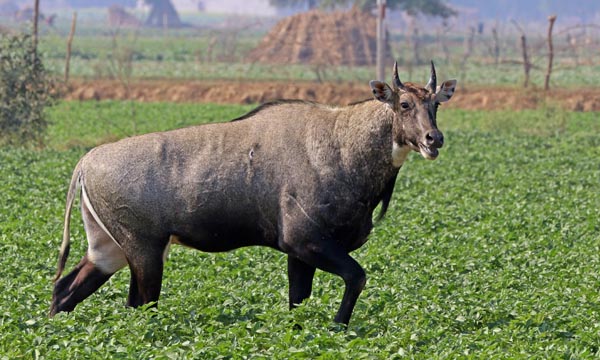Related Wildlife Species Founds in India
Lorem ipsum dolor sit amet, consectetuer commodo ligula eget dolor
Aenean massa Cum dis parturient montes.
Change language

Location :Kaimur District of Bihar
Coverage area : 500 sq. km
Main attraction : Antelope, Blue Bull, Leopard
Best time to visit :November to February
Nearby excursions : Kanwar Lake Bird Sanctuary, Udaypur Wildlife Sanctuary in Bihar
Nearby cities :Bhabua
Kaimur Wildlife Sanctuary, established in 1982,is situated nearby the city ofBhabua in the district of Kaimur, Bihar. It is the largest wildlife reserve spread out at the Bihar-Uttar Pradesh border. Apart from its wildlife and vegetation, this sanctuary is famous for its lakes as waterfalls too. Along with this, this reserve containsrock arts, caves of ancient historic times, and a collection of antique fossils. A few waterfalls can be found in the valley region of this sanctuary likeKarkat and Telhar and lakes like
Anupam Lake. The Mukha Waterfalls is also one of its major points of attraction.
Another significant attraction of this place is the famous ancient painting calledLakhania. It is a type of artwork done on the rocks,which demonstrates the life of individuals of the pre-historic times and their cultures and customs. The ancientartworks in earthenware colors, which are about 4000-year old delineate chasing, war scenes, cattle feeding, improving floor plans, local errands, bee farming, household chores,and so on.
Being the biggest wildlife sanctuary in the state of Bihar and Uttar Pradesh, the Kaimur reserve is expanded over a vast area of 1342 kilometers. A tourist can cover a lot of exquisite sightseeing while traveling through this place.
The climate in the sanctuary during the summers is incredibly sweltering.During this time, the temperature fluctuates from twenty-seven to forty-five degrees Celsius. However, winters are quite cooler here as you can expect. Temperatures generally hover in the ranges from six to twenty-six degree Celsius. Heavy rainfall is quite persistent during the rainy season here.Monsoons stay here from June till August.
If you are planning to visit Kaimur Wildlife Sanctuary, then ideally you should plan your trip during the months starting from October to March. Amid this time, the weather is very amicable for touring here as it?sneither too hot nor cold. The best time to visit during winter is from November to February.
New Delhi , 913.2 km
Bangalore , 1891.3 km
Chennai , 1922.8 km
Mumbai , 1550.3 km
Kolkata , 624.2 km
Allahabad , 213.9 km
Kanpur , 424.5 km
Agra , 694.9 km
Lucknow , 413.2 km
Noida , 639 km
Mirzapur , 129.9 km
Guwahati , 1157.8 km
Varanasi , 103.6 km
Airways
The closest air terminal is in Varanasi, which is about one hundred twelve kilometers from Kaimur reserve.:
Railways
The nearby railway station isSasaram, it is about 50 kilometers from the Park. Also, the other stations nearby are Bhabhua and Dehri-on-Son.
Roadways
You can reach the sanctuary roadways either from Mirzapur or Varanasi. The closest town here is Robertsganj from where you can avail taxis and buses to reach the main locations of the Park.
Accommodation facilities
Once you reach the Park, you can get varieties of accommodation facilities to choose from. There are three backwoods rest houses that you can avail of in Mahuaria, Harrah, and Churk. If you are looking for cottages for travelers, Mahuaria is the place to book one.
Things to do
You are into the deep forest. However, to make your trip comfortable and safe here are some guidelines instructed by the forest department for you to oblige. Take a look:
Night walks and strolls are not permitted inside the reserve forest.
You should not carry inflammable materials. Smoking is strictly disallowed.
You must not carry any types of explosives or fire weapons.
Exceeding speed limits is strictly prohibited.
Try not to litter non-degradable wastes like plastic jars/bottles/packs. Guests are requested to get sacks for gathering the junks and carry with them while vacatingthereserve and discard itof at the recommended spot outside the Park.
Vehicles like shut autos, jeeps, rover, and small buses are permitted to enter the Park for touring purposes. Bikes, three-wheelers, big four-wheelers,and so on are not permitted inside the Park.
Non-veggie foods and mixed beverages are prohibited in the rest houses and inside the sanctuary.
Damaging the vegetation or disturbing wildlife in the park is entirely restricted.